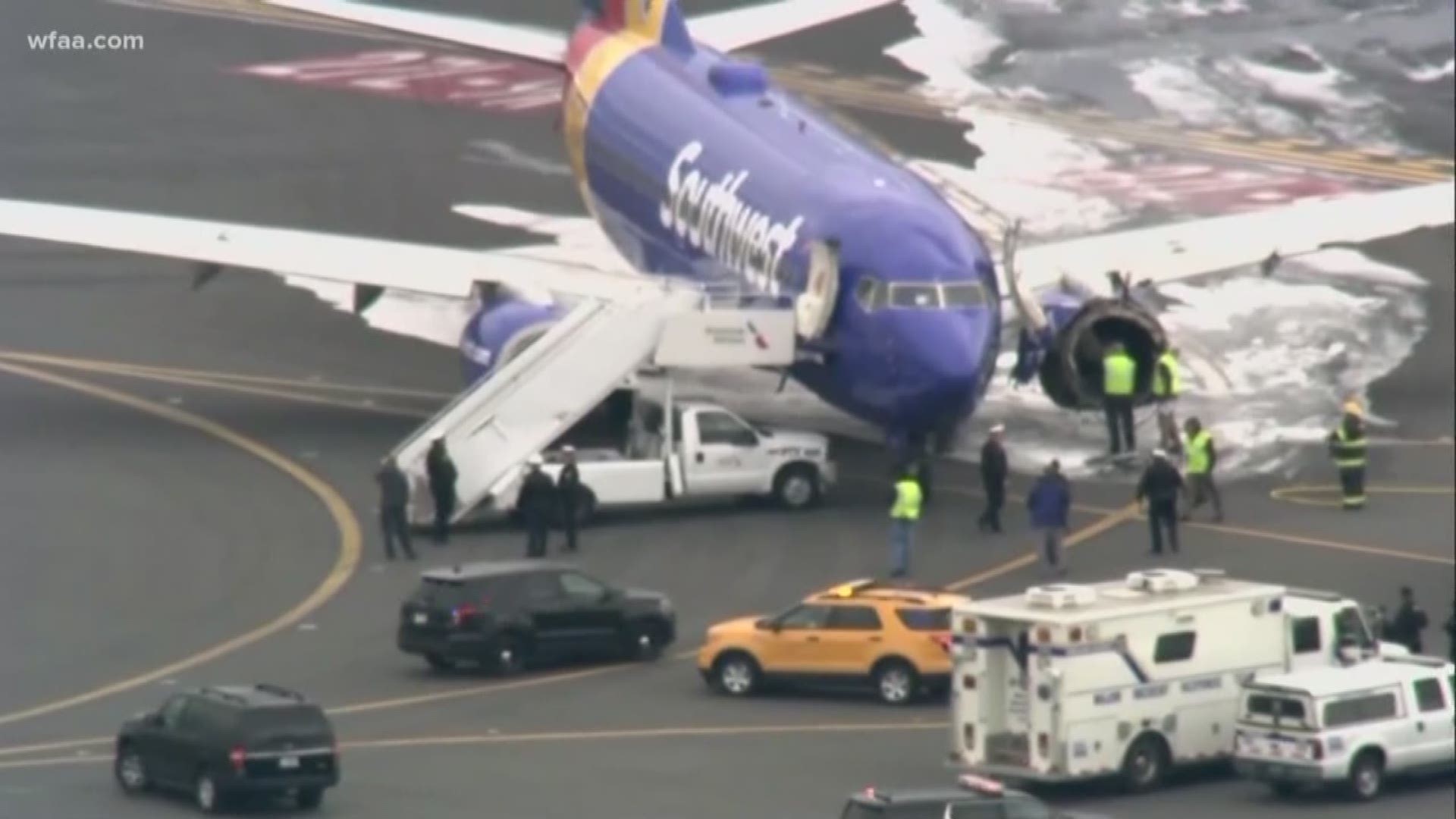DALLAS – Passengers inside Southwest Flight 1380 experienced terrifying moments before the plane made an emergency landing in Philadelphia Tuesday morning.
After a Wednesday NTSB update, we now know more about what was happening just after the engine exploded.
"The aircraft began a rapid, un-commanded left roll at 41-degree angle,” NTSB Chairman Robert Sumwalt said.
The plane was violently vibrating. Video broadcast live by passenger Marty Martinez shows what was going on.
But, what they experienced is hard to see. It's something they felt. Ladd Sanger, a pilot and aviation attorney, detailed the events as they likely happened.
"The sound of the depressurization, the sudden extreme of cold of minus 50 degrees… The difference in fog and the atmospheric conditions and how the cabin changed would be incredibly disconcerting to people on board the aircraft,” he said.
The NTSB said the descent was steep and the landing was rough. It was just 22 minutes after the engine explosion that the plane landed in Philly.
“The speed it touched down was right about 165 knots, and that converts to 190 miles per hour," Sumwalt said.
The NTSB also released pictures of one of the engine cowlings that landed about 65 miles northwest of Philadelphia – something that’s not supposed to happen.
Engines that explode are supposed to be contained and not send debris flying and penetrating the cabin.
"This is an incredibly rare event,” Sanger said. “[It’s more likely for someone to get] hit by lightning than [for] that to happen.”
But it did happen, and now investigators in Philadelphia and Dallas have to pour through the maintenance records and the debris.
They believe one of the fan blades failed, and they want to know why.
"The design of the engine should be such that is not possible for the fan to separate and leave the cowling,” Sumwalt said.
The CFM56 engine is used in thousands of planes across the world, so it's critical for investigators to figure out how to prevent it from happening again.
Sumwalt stopped short of saying the fleet of 737s needs to be inspected, but said he was “very concerned” about Tuesday’s incident.

